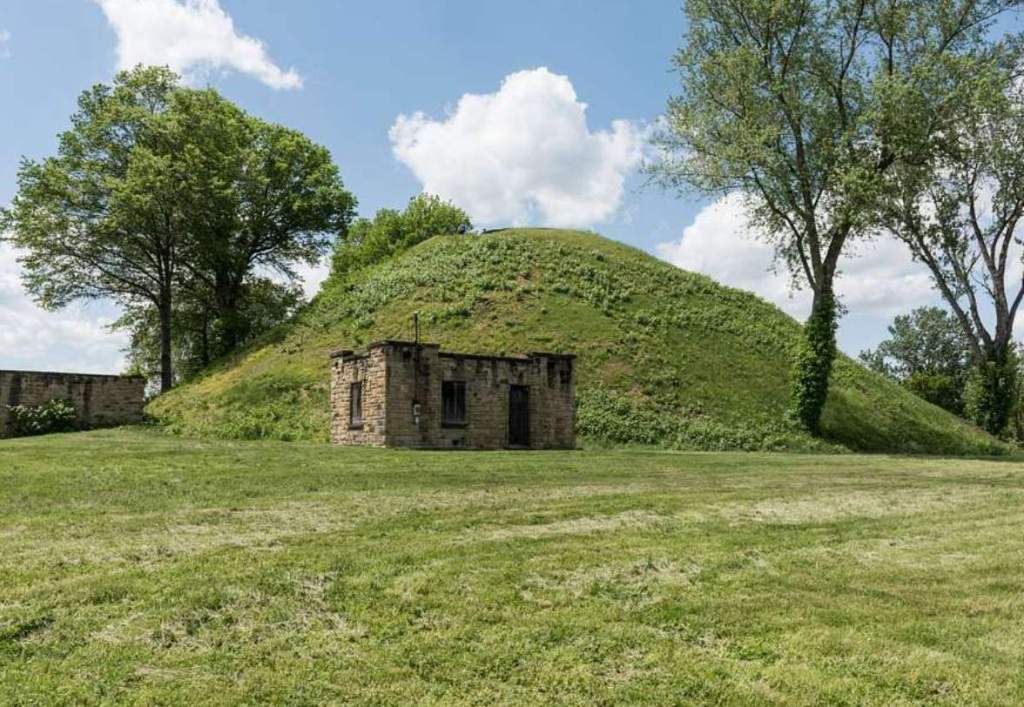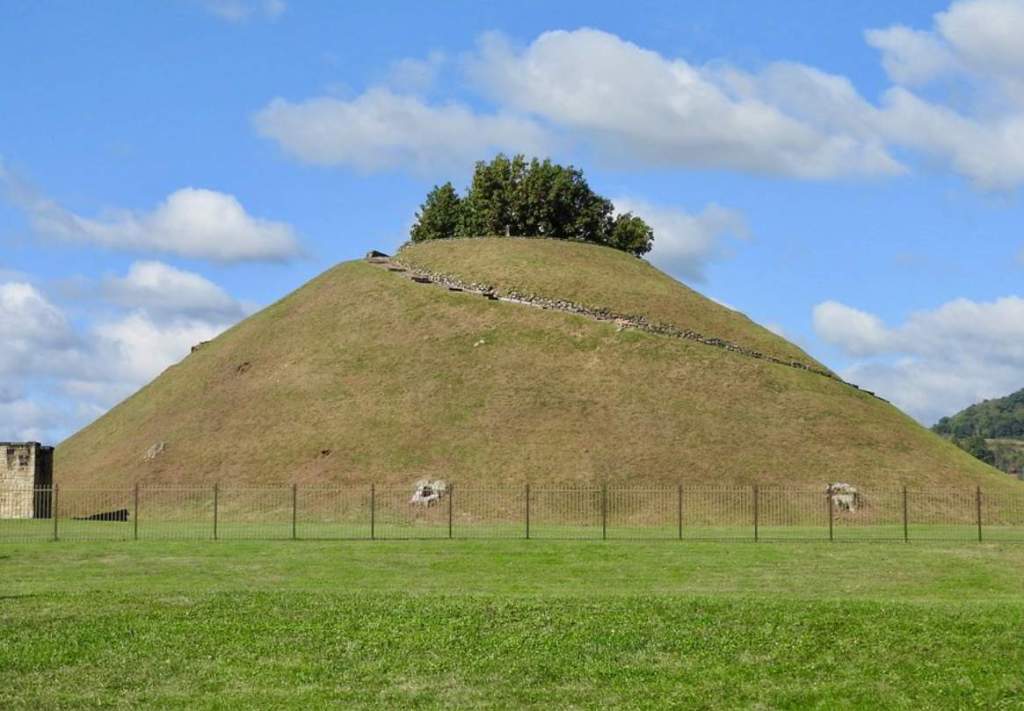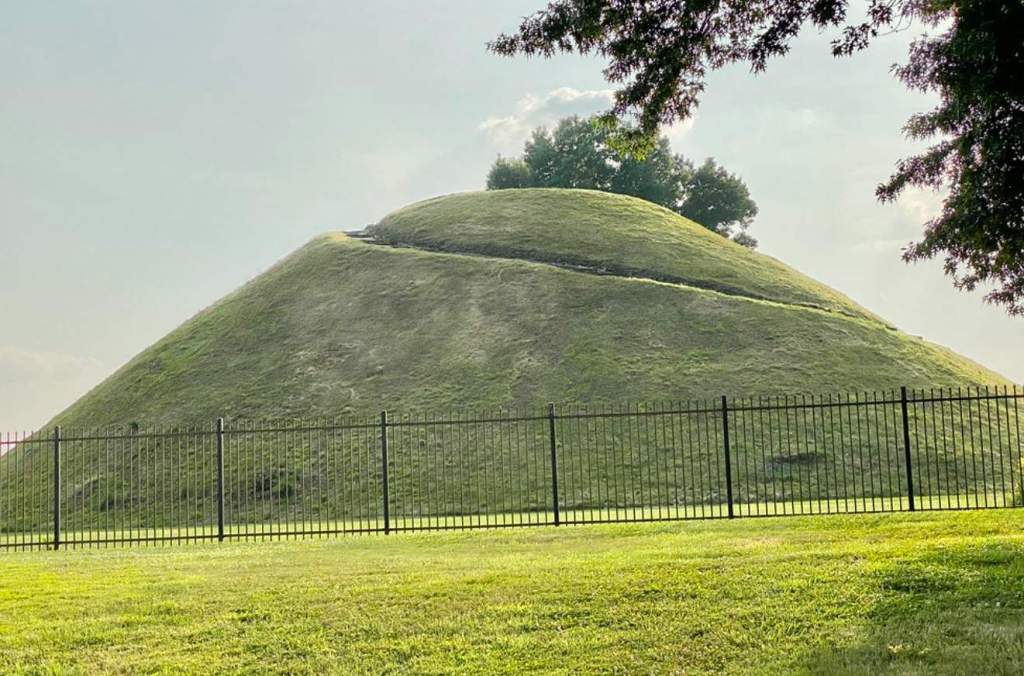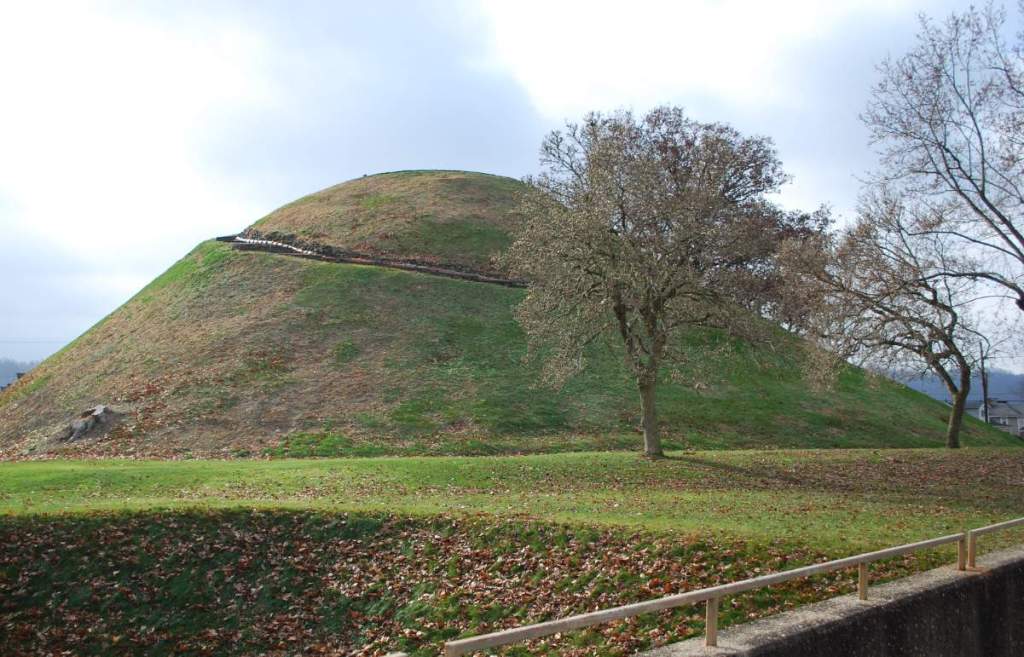Grave Creek Mound is one of North America’s most curious monuments. A burial mound and earthworks complex once surrounded it with a moat. Grave Creek Mound is also known as Mammoth Mound. Adena people made the largest earthwork between 600 BCE and 100 CE. This is in the middle of the Ohio River Valley in West Virginia. The Adena culture slowly assimilated into the more sophisticated Hopewell culture not long after the Grave Creek Mound was built. Around it, Moundsville developed along the Ohio River.
In contrast to the irregular shapes of Hopewell mounds, Adena mounds were built in stages over time and were symmetrical in shape. In the beginning, Adena’s mounds were simply ground-level graves covered with dirt hills. Over time, successive burials were made on top of the original mound, again covered with soil. Over the decades, graves were piled on top of one another, forming a large mound.
The two largest burial mounds in North America are Miamisburg Mound in Miamisburg, Ohio, and Grave Creek Mound in Moundsville, West Virginia. Both were massive undertakings, requiring the movement of more than 60,000 tons and 54,420,000 kg, or three million basket loads, of earth. Grave Creek Mound is of the late Adena Period and was built in successive stages over 100 years, from about 250 to 150 BCE. It is not known why the Adena chose to build this particular mound on such a huge scale compared with other burial mounds in the area. These mounds generally range in size from 20 to 300 feet and 6 to 90 meters in diameter.
Grave Creek Mound was originally 65 feet, 19.5 meters tall, with an outer circumference of 910 feet, 273 meters. Added to the mystery was the discovery of a moat with a south-facing causeway accessing the mound. The moat was about 40 feet by 12 meters wide and five feet deep, encircling Grave Creek Mound.
It was buried in 1838, when the mound was excavated. Grave Creek Mound is remarkably similar in design to the pre-historic earthen Silbury Hill, moat, and causeway located in Avebury, England. Although little remains of their villages, the Adena left grand monuments to mark their passing. One of the greatest is the Grave Creek Mound. The first excavation of the mound took place in 1838 by some amateurs.
To gain entrance to the mound, two long shafts were dug, one vertical and one horizontal. The tunnels led to the discovery of two log burial vaults, each directly over the other. Another horizontal shaft dug from the outer base of the mound revealed 10 skeletons in sitting positions. It also revealed masses of charcoal, including cremated human bones. The first chamber was discovered at a depth of 60 feet 18 m, while the second was discovered at a depth of 77 feet 23 m, that is, 12 feet 3.6 m below the “bottom” of the mound itself.
Stone slabs surrounded the subsurface log chamber. A male and female skeleton were retrieved along with mica sheets, copper ornaments, and nearly 700 shell beads. A single male skeleton wearing copper arm rings and various ornaments was found in the upper vault. A flat sandstone disk inscribed in ancient Semitic script was also found in the vault.
The Grave Creek Tablet is a small inscribed stone, about 1 7/8″ 4.8 cm wide and 1 1/2″ 3.6 cm high. The reverse side was not inscribed. Ever since its discovery, the tablet has created quite a stir in both theological and archaeological circles. Most academics casually dismiss it as a hoax. In 1976, Harvard professor and epigrapher Barry Fell declared the tablet genuine. Fell professed that its symbols derive from an ancient Punic, or Phoenician, alphabet used on the Iberian Peninsula during the first millennium BCE. In 1838, when the script was discovered, no scholar had yet deciphered it, so it couldn’t be a fake.
Despite the heated controversy over a rune-like text associated with Celtic Europeans, the find was well documented and indicates that the Adenas were either literate people or had strong cultural ties with seafaring Europeans. The Iberian translation of the inscription is: “The mound raised on high for Tasach this tile His queen caused to be made.”
The inscription is an exchange of greetings between the Queen of Celtic culture to the east and the king of the local Adena nation. There have been other similar stones found in the area that are written in ancient Celtic / Punic. It is unknown, however, whether any of them were found at Grave Creek or any other dateable burial mound.
The real historical anomaly is the presence of Semitic inscriptions in ancient American tombs. The town of Moundsville adopted its name from the multitude of burial mounds in the vicinity when it was founded in the late 1700s. Grave Creek Mound was the largest of 47 mounds within Moundsville, including other elaborate earthworks now lost. The only earthwork known to exist was a 5-acre, 2-hectare octagon near the Ohio River, also ruined by centuries of farming and development.
Grave Creek Mound is all that remains today, the last remnant of a massive Adena necropolis of sorts. Some in town claim it was the ghosts of the ancient mounds who caused the plague of hauntings in the 20th century. Many strange phenomena have been recorded in Moundsville, including frequent UFO sightings, men in black, phantom cars on the road late at night, and inexplicable interference with telephones and televisions.
A period of bizarre events culminated in 1966 when a huge winged man with glowing red eyes called Mothman haunted Moundsville. The earthly entity took off straight up in the air without using its wings. It chased cars near the Chief Cornstalk Hunting Grounds, an abandoned World War II ammunition dump. Mothman emitted a loud, squeaking noise like a gigantic mouse and terrified all who encountered him. A bridge spanning the Ohio River collapsed in an unsettling accident, killing most of the witnesses to the Mothman sightings.
Getting to Crave Creek The most significant prehistoric monument in West Virginia is situated in the quiet, middle-class town of Moundsville, near the Ohio River. Moundsville is conveniently located 15 minutes south of Wheeling, on West Virginia’s northern arm between Ohio and Pennsylvania. Grave Creek Mound State Park and the Delf Norona Museum are located just east of Route 2 on Jefferson Avenue.
Artifacts and exhibits interpreting the Adena people’s lifestyle are displayed in the museum, adjacent to the 2,200-year-old mound. The Iberian translation of the Grave Creek Tablet is incorporated into an exhibit about the stone in the Delf Norona Museum. An entrance fee is required for the museum and access to the trail leading to the top of the mound.
Multiple burials at different levels within Grave Creek Mound indicate that it was constructed in successive stages. One of these tombs contained the Grave Creek Tablet in an enigmatic script deciphered as Iberian in Punic.
There are many artifacts on display at the Delf Norona Museum. The West Virginia Division of Culture and History owns and operates it. The museum opened in 1978, and exhibits explain the culture of the Adena people and the construction of the mound.
Read More – Gilbert Hill – A Monolith Column of Black Basalt




